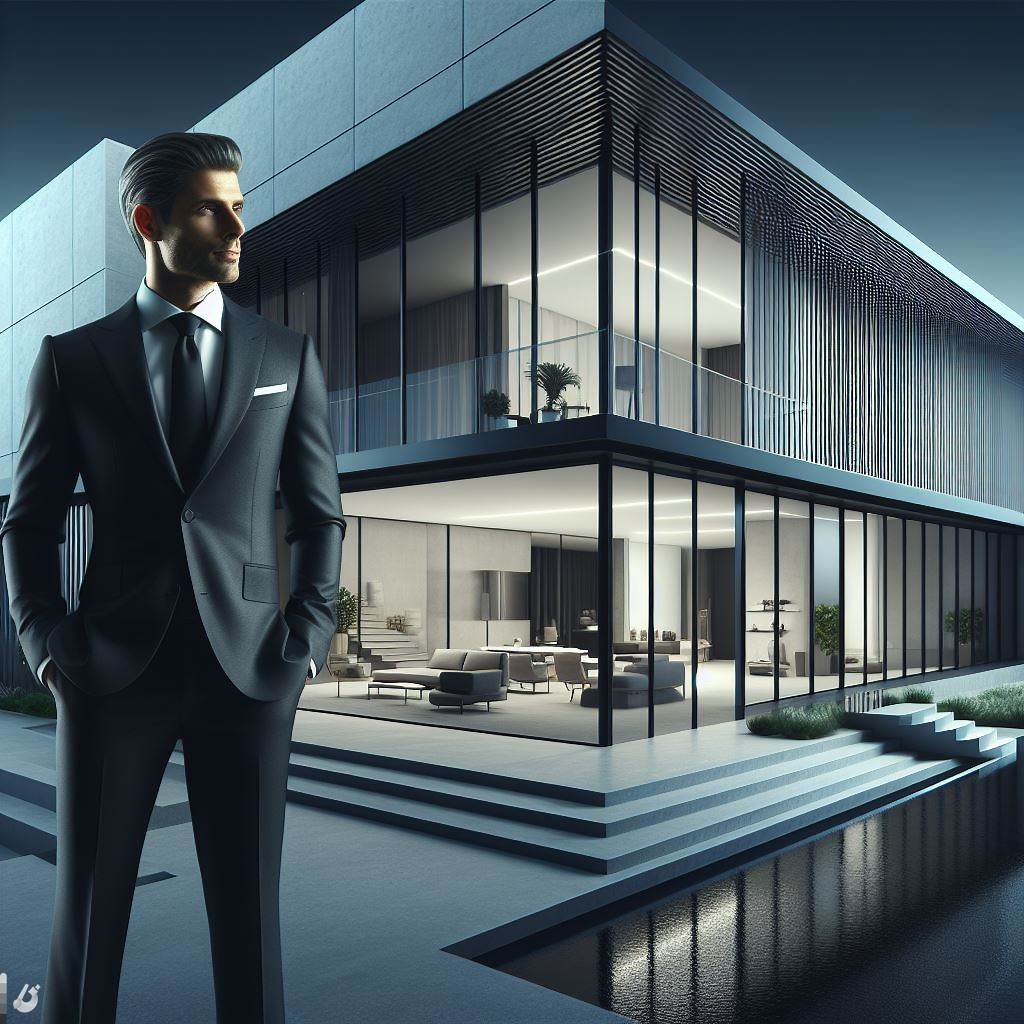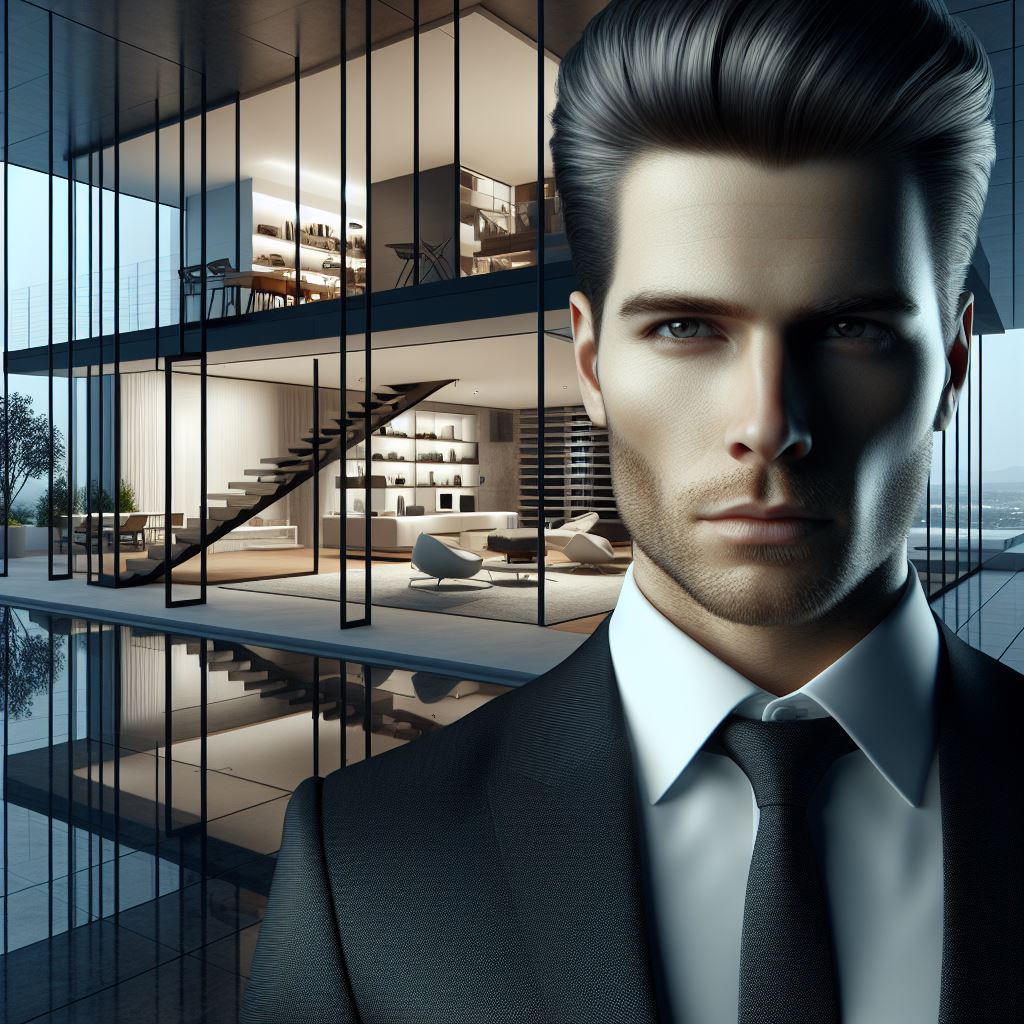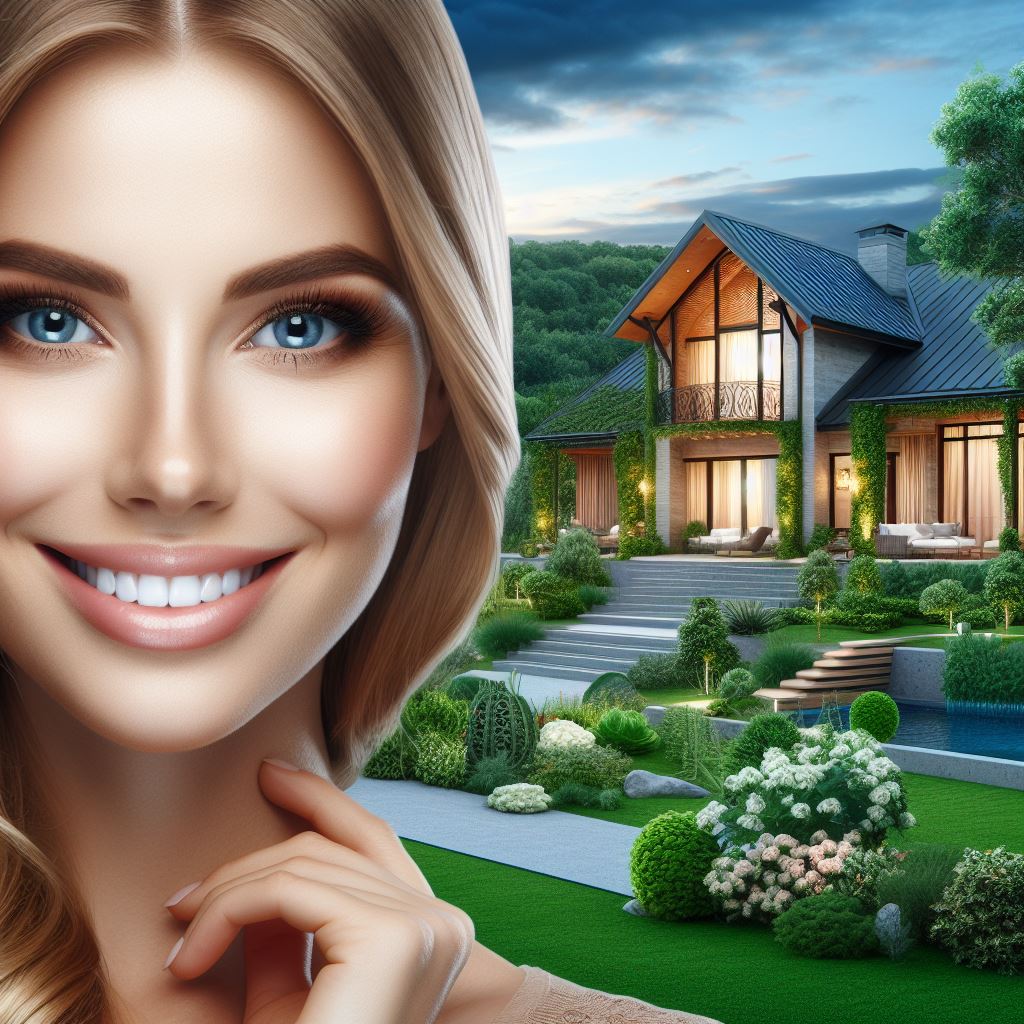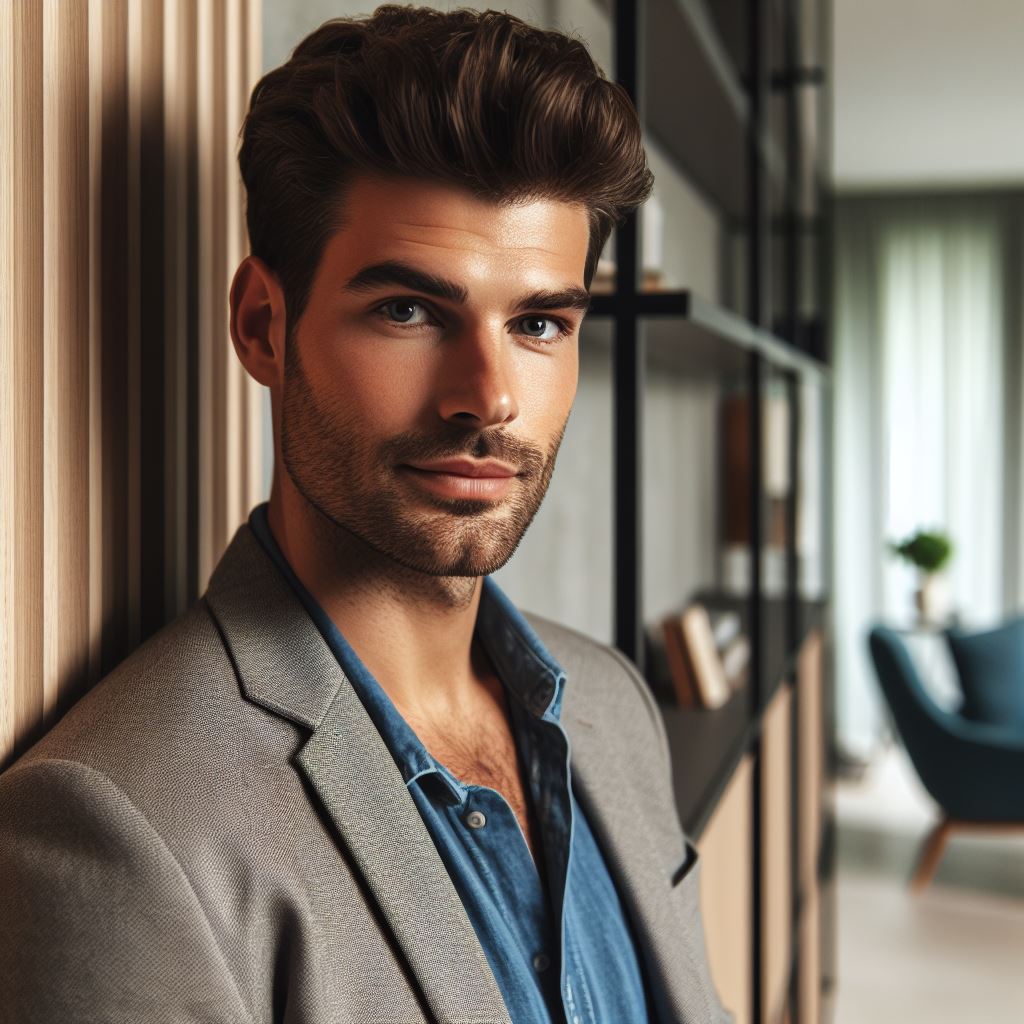Introduction
IEco-chic, a captivating convergence of refined aesthetics and environmental mindfulness, represents the epitome of sustainable luxury design.
This exquisite design ethos seamlessly marries opulence with a commitment to eco-friendly practices, fostering a harmonious coexistence between luxury and ecological responsibility.
In recent years, a discernible shift has transpired in consumer preferences, catalyzing an unprecedented surge in the appreciation for sustainable luxury design.
With an increasing societal consciousness about environmental impact, individuals now actively seek out exquisite creations that not only exude sophistication but also align with eco-friendly principles.
This blog post embarks on an insightful exploration of the ever-evolving landscape of eco-chic design trends.
From the innovative use of sustainable materials to the incorporation of eco-conscious technologies, we navigate through the dynamic interplay of conscientious opulence.
Join us in unraveling the nuances of this design paradigm as we showcase the aesthetic allure and environmental responsibility inherent in sustainable luxury.
Together, let’s delve into a world where luxury not only captivates the senses but also resonates with a deep commitment to sustainable living.
Importance of Sustainable Luxury Design
Environmental Impact of Traditional Luxury Design
Excessive use of resources and energy in traditional luxury design contribute to environmental degradation.
Unsustainable sourcing of materials, such as rare woods or animal products, leads to deforestation and biodiversity loss.
Chemical-intensive processes used in conventional manufacturing pollute air, water, and soil, harming ecosystems.
Waste generation and landfill disposal from traditional luxury design contribute to pollution and climate change.
Traditional luxury design often lacks transparency regarding its production practices and can involve unethical labor.
Benefits of Incorporating Sustainable Practices
- Sustainable luxury design minimizes environmental impact through conscious material sourcing and production methods.
- Choosing renewable and recycled materials reduces resource depletion and promotes circular economy principles.
- Energy-efficient processes and technologies in sustainable luxury design help lower carbon emissions and combat climate change.
- By avoiding harmful chemicals, sustainable luxury design ensures the safety and health of both consumers and workers.
- Ethical labor practices prioritize fair wages, safe working conditions, and empower artisans and local communities.
Rise in Consumer Demand for Eco-Friendly Designs
Increasing awareness about environmental issues has led consumers to demand more sustainable luxury options.
Millennial and Gen Z consumers, in particular, prioritize sustainability and expect brands to follow ethical practices.
Transform Your Real Estate Decisions
Unlock personalized real estate insights crafted just for you. Get actionable advice designed to amplify your success.
Get StartedConsumers associate eco-friendly luxury designs with higher quality, exclusivity, and social status.
Eco-chic designs provide a unique selling proposition for luxury brands, attracting a wider customer base.
Brands that incorporate sustainable practices can enhance their reputation, strengthen brand loyalty, and foster innovation.
In essence, sustainable luxury design is critical to address the environmental challenges posed by traditional luxury design.
By minimizing environmental impact, incorporating sustainable practices offers numerous benefits, from resource conservation to ethical considerations.
Moreover, the rising consumer demand for eco-friendly designs provides a compelling business case for luxury brands to embrace sustainability.
By adopting eco-chic principles, brands can not only attract environmentally conscious consumers but also enhance their brand image and contribute to a greener future.
Read: Seaside Sanctuaries: Luxury Coastal Living
Sustainable Materials in Luxury Design
Use of natural and renewable materials
- Bamboo: A highly sustainable material, bamboo is used in various luxury designs due to its durability and rapid growth.
- Cork: Cork is a renewable material that can be harvested without causing harm to the tree, making it an eco-friendly choice for luxury designs.
- Reclaimed wood: Using reclaimed wood reduces the need for new timber and helps minimize deforestation.
Recycled and upcycled materials
- Vintage furnishings: Incorporating vintage furniture pieces adds a touch of sophistication while promoting sustainability by reusing old items.
- Repurposed materials: Luxury designs often include repurposed materials like salvaged metals or old architectural elements, giving them a unique and eco-friendly appeal.
Low VOC and non-toxic paints and finishes
In luxury design, the choice of paints and finishes plays a crucial role in creating a sustainable space.
Low VOC (Volatile Organic Compound) paints and finishes release fewer harmful gases into the atmosphere, reducing the impact on indoor air quality and the environment.
These eco-friendly options are now widely available in the luxury design market.
Non-toxic paints and finishes are also gaining popularity as they do not contain harmful chemicals like lead or mercury.
These alternatives offer a healthier living environment without compromising on the luxurious aesthetic.
By using these sustainable materials and finishes, luxury designers can create spaces that are environmentally friendly without sacrificing style or elegance.
Showcase Your Real Estate Business
Publish your company profile on our blog for just $200. Gain instant exposure and connect with a dedicated audience of real estate professionals and enthusiasts.
Publish Your ProfileMoreover, sustainable materials can often add a unique touch to luxury designs, making them stand out from conventional options.
Bamboo, for example, provides a distinct texture and visual appeal that enhances the overall aesthetic.
Incorporating reclaimed wood not only adds character but also tells a story of history and sustainability.
Each piece of reclaimed wood carries its own unique marks and imperfections, contributing to the charm and authenticity of the design.
Vintage furnishings and repurposed materials bring a sense of nostalgia and craftsmanship to luxury spaces.
The notion of giving new life to old items adds a layer of depth and meaning to the design, making it more than just a visually appealing arrangement.
Furthermore, using low VOC and non-toxic paints and finishes ensures the well-being of both occupants and the environment.
With increasing awareness about the harmful effects of traditional paints on human health, luxury designers are shifting towards more sustainable alternatives.
The use of sustainable materials in luxury design is not just a trend but a responsible choice.
It reflects a commitment to preserving natural resources, promoting ethical production practices, and creating healthier living spaces.
By incorporating natural and renewable materials, recycled and upcycled elements, as well as eco-friendly paints and finishes, luxury designers can lead the way towards a more sustainable and eco-chic future.
Read: Architectural Digest: Top 10 Luxury Trends
Energy-Efficient Design Elements
Energy-efficient appliances
Incorporating energy-efficient appliances is a crucial step towards sustainable luxury design.
These appliances are engineered to consume less energy while still delivering high-performance results.
They have advanced features like power-saving modes and sensors that adjust energy usage based on usage patterns.
By opting for energy-efficient appliances, homeowners can significantly reduce their energy consumption and, consequently, their carbon footprint.
Not only do these appliances save energy, but they also save money on utility bills in the long run.
They make sustainable living more accessible and convenient without compromising on style or performance.
LED lighting and smart home systems
LED lighting has revolutionized the way we illuminate our homes.
These energy-efficient light bulbs last longer and consume significantly less energy compared to traditional incandescent bulbs.
LED lights are also available in various colors and can be dimmed, allowing homeowners to create the desired ambiance while saving energy.
Additionally, incorporating smart home systems can further enhance energy efficiency.
These systems enable homeowners to control lighting, heating, and cooling remotely or automatically based on preset preferences.
By optimizing energy usage, smart home systems contribute to a greener living environment.
Thermal insulation and smart glazing solutions
Thermal insulation and smart glazing solutions play a vital role in regulating indoor temperature and improving energy efficiency.
Proper insulation reduces heat transfer and prevents unwanted energy loss, resulting in lower heating and cooling costs.
It also creates a comfortable living environment by maintaining a consistent temperature throughout the year.
Smart glazing solutions, such as low-emissivity (low-E) glass, can also contribute to energy efficiency.
These types of glass have a special coating that reflects heat while allowing natural light to enter.
They help minimize the need for artificial lighting and reduce heat gain during hot summer months, reducing the load on cooling systems.
Showcase Your Real Estate Business
Publish your company profile on our blog for just $200. Gain instant exposure and connect with a dedicated audience of real estate professionals and enthusiasts.
Publish Your ProfileIncorporating thermal insulation and smart glazing solutions not only reduces energy consumption but also enhances the overall sustainability of a luxury design.
By prioritizing energy efficiency, homeowners can create a space that is both environmentally friendly and aesthetically pleasing.
In short, energy-efficient design elements are essential for sustainable luxury design.
Incorporating energy-efficient appliances, LED lighting, and smart home systems promotes greener living while providing convenience and style.
Additionally, thermal insulation and smart glazing solutions contribute to reduced energy consumption and optimal indoor comfort.
By integrating these elements, homeowners can create a space that embodies eco-chic, combining sustainability and luxury seamlessly.
Water Conservation in Luxury Design
In the realm of sustainable luxury design, water conservation emerges as a pivotal facet.
Forward-thinking designers actively integrate eco-conscious strategies to minimize water usage and promote environmental stewardship.
Low-flow fixtures and water-saving technologies
Luxury meets responsibility with the implementation of low-flow fixtures and cutting-edge water-saving technologies.
Opulence doesn’t have to compromise efficiency—modern faucets and showers exude glamour while significantly reducing water consumption.
Championing innovation, designers are incorporating sensor-driven faucets and advanced filtration systems.
These technologies not only enhance the user experience but also underscore a commitment to resource preservation.
Rainwater harvesting and greywater recycling systems
In the pursuit of sustainable opulence, rainwater harvesting and greywater recycling systems take center stage.
This ingenious approach transforms rainfall into a precious resource, harvested for various non-potable uses within the luxurious confines of a residence.
Greywater recycling elevates eco-consciousness by repurposing water from showers, sinks, and laundry for irrigation and flushing.
This dual-pronged strategy harmonizes luxury living with responsible resource management.
Drought-resistant landscaping and water-wise irrigation
Lush landscapes need not be water guzzlers.
Drought-resistant landscaping, featuring native plants and resilient greenery, encapsulates the essence of water-wise luxury design.
Harmonizing aesthetics with ecological mindfulness, these landscapes thrive with minimal irrigation.
Enterprises in sustainable luxury design are seamlessly integrating smart irrigation systems that optimize water distribution based on weather patterns and soil conditions.
The result is a verdant expanse that doesn’t compromise the ethos of environmental responsibility.
In general, water conservation in luxury design is not merely a trend but a fundamental shift towards sustainable opulence.
With low-flow fixtures, innovative water technologies, rainwater harvesting, greywater recycling, and drought-resistant landscapes, the intersection of luxury and environmental stewardship becomes a reality.
Embracing these practices, the eco-chic movement sets a new standard, proving that lavish living and conservation can coexist harmoniously.
Read: Space-Age Style in Contemporary Estates
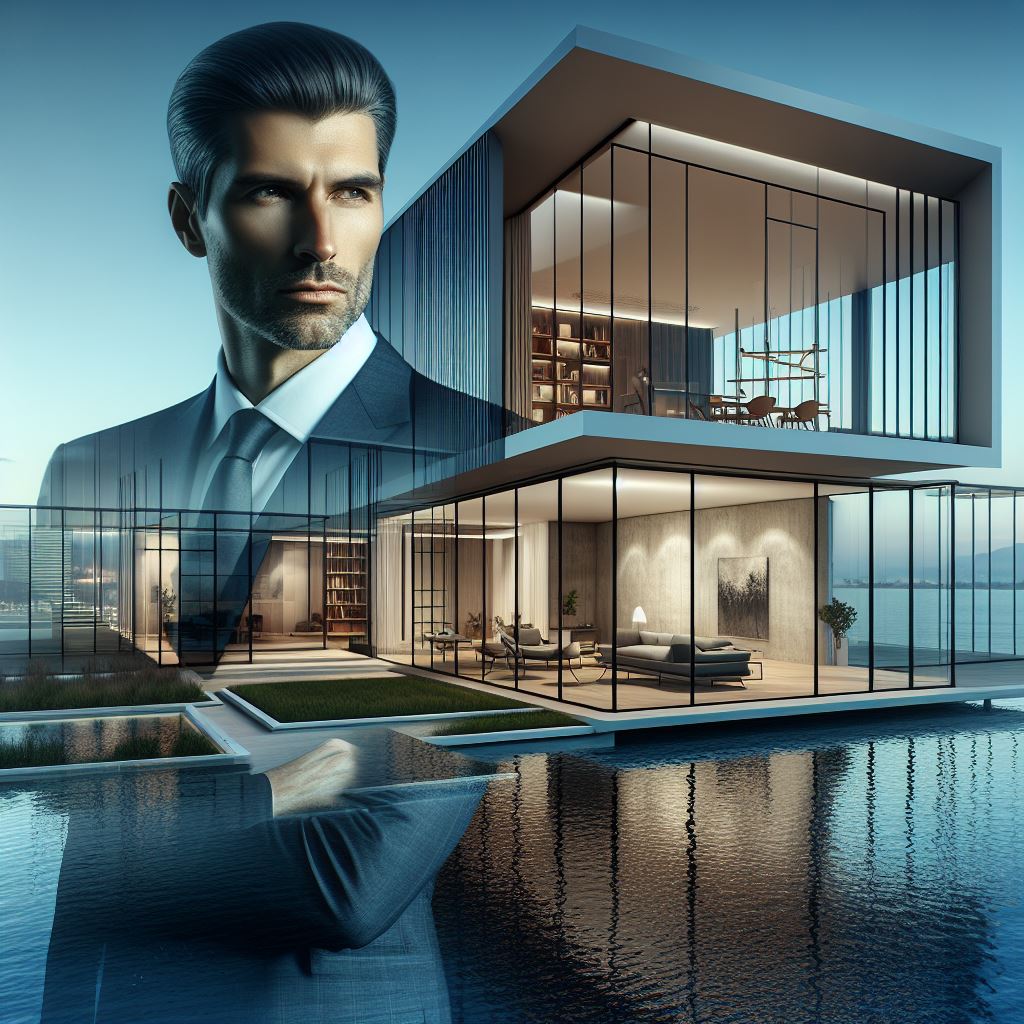
Integration of Technology and Sustainability
Smart home automation for energy and resource management
Modern luxury design trends are embracing sustainability through the integration of technology.
One such approach is the use of smart home automation systems that effectively manage energy and resources.
These advanced systems provide homeowners with the ability to control and monitor various aspects of their homes remotely.
Smart home automation technology allows users to optimize energy consumption by automatically adjusting heating, cooling, and lighting levels based on occupancy and natural lighting conditions.
Through the use of sensors and programmable thermostats, energy waste can be significantly reduced, leading to lower utility bills and a smaller carbon footprint.
Showcase Your Real Estate Business
Publish your company profile on our blog for just $200. Gain instant exposure and connect with a dedicated audience of real estate professionals and enthusiasts.
Publish Your ProfileFurthermore, smart home automation systems can also help conserve water through the use of smart irrigation systems that adjust watering schedules based on weather conditions.
This ensures that plants and lawns receive adequate hydration while minimizing water waste.
Integration of renewable energy sources
Another way luxury design is incorporating sustainability is through the integration of renewable energy sources.
Solar panels, for example, can be seamlessly integrated into the design of a home, providing an eco-friendly and cost-effective alternative to traditional energy sources.
By harnessing the power of the sun, homeowners can generate their own electricity, reducing their dependence on fossil fuels and lowering their energy bills.
Excess energy can even be sold back to the grid, making solar panels a smart financial investment.
In addition to solar panels, luxury designs are integrating other renewable energy sources such as wind turbines and geothermal systems.
These clean energy technologies further enhance the eco-friendly features of a home while maintaining a luxurious aesthetic.
Use of sustainable technology in luxury design products
Luxury design products are also becoming more sustainable through the use of innovative technologies.
Sustainable materials and manufacturing processes are being implemented to create high-quality, environmentally friendly products.
For example, designers are utilizing 3D printing technology to create custom-made furniture and decor using recycled materials.
This not only reduces waste but also allows for greater customization and flexibility in design.
Furthermore, luxury brands are exploring the use of sustainable fabrics in their products.
Organic cotton, bamboo, and recycled polyester are among the materials used to create beautiful and luxurious textiles.
These eco-friendly fabrics not only promote responsible consumption but also provide a superior level of comfort and style.
The integration of sustainable technology in luxury design products extends beyond the physical aspect.
Smart fabrics embedded with sensors can monitor temperature, humidity, and air quality, enhancing the overall comfort and well-being of occupants.
In review, the integration of technology and sustainability in luxury design trends is revolutionizing the industry.
Smart home automation, renewable energy integration, and sustainable materials are driving the creation of eco-chic designs that combine luxury with environmental responsibility.
Embracing these trends not only benefits homeowners in terms of energy efficiency and cost savings but also contributes to a greener and more sustainable future.
Read: Glass Wonders: Transparent Luxury Houses
Eco-Friendly Furniture and Textiles
In the ever-growing movement towards sustainable living, eco-friendly furniture and textiles play a crucial role.
These aspects of interior design not only contribute to a greener environment but also offer consumers the opportunity to surround themselves with beautiful and luxurious pieces that align with their values.
Use of Organic and Natural Fabrics
Opting for organic and natural fabrics is an excellent way to incorporate eco-friendly elements into interior design.
Organic cotton, linen, hemp, and bamboo are some popular choices known for their sustainability.
These fabrics are grown without the use of harmful pesticides, benefiting both human health and the environment.
Choosing textiles made from natural fibers also reduces the carbon footprint associated with the production process.
This not only enhances the overall aesthetic of a space but also provides comfort and breathability to its users.
Sustainable Furniture Manufacturing Practices
Sustainable manufacturing practices in the furniture industry have become increasingly important.
Many companies now utilize reclaimed or recycled materials to create their furniture pieces.
Showcase Your Real Estate Business
Publish your company profile on our blog for just $200. Gain instant exposure and connect with a dedicated audience of real estate professionals and enthusiasts.
Publish Your ProfileBy repurposing wood, metal, and other materials, manufacturers reduce the demand for new resources.
This approach helps minimize deforestation and reduce waste in landfills.
Furniture made from sustainable materials is not only eco-friendly but also showcases unique and visually appealing designs.
Non-Toxic and Eco-Friendly Upholstery Materials
Choosing non-toxic and eco-friendly upholstery materials is essential for creating a healthier indoor environment.
Traditional upholstery fabrics often contain harmful chemicals that can be released into the air over time.
Opting for sustainable alternatives, such as organic wool, natural latex, or recycled polyester, eliminates exposure to these toxins.
Eco-friendly upholstery materials are also kinder to the planet, as they require fewer energy-intensive processes during production.
Furthermore, they promote better air quality within the home and contribute to a more sustainable future.
Incorporating eco-friendly furniture and textiles into interior design not only reduces the environmental impact but also enhances the overall aesthetic appeal of a space.
The use of organic and natural fabrics brings a sense of luxury and comfort while supporting sustainable farming practices.
Sustainable furniture manufacturing practices allow for the creation of unique, visually striking pieces while reducing waste and preserving natural resources.
Choosing non-toxic upholstery materials promotes a healthier indoor environment, benefiting both the occupants and the planet.
By consciously selecting eco-friendly options, individuals can contribute to a more sustainable and eco-chic lifestyle.
Embracing sustainable luxury design trends not only allows for the expression of personal style but also ensures a better future for generations to come.
Green Building Certifications and Standards
LEED certification for sustainable design and construction
LEED certification, which stands for Leadership in Energy and Environmental Design, is a globally recognized standard for sustainable building design and construction.
It provides a framework for creating environmentally responsible and resource-efficient buildings.
The certification process involves a comprehensive evaluation of various aspects of a building project, including site development, water and energy efficiency, materials selection, indoor environmental quality, and innovation.
Projects are awarded points based on their compliance with specific criteria.
LEED certification promotes the use of sustainable materials, renewable energy sources, and efficient waste management practices.
It encourages architects and designers to prioritize environmental and social responsibility in their projects, reducing the environmental impact of buildings and enhancing occupant health and well-being.
Energy Star ratings for appliances and fixtures
The Energy Star program is a voluntary labeling system developed by the U.S.
Environmental Protection Agency (EPA) to identify products that meet specific energy-efficiency criteria.
It aims to help consumers make informed choices and reduce energy consumption.
Energy Star ratings are available for a wide range of appliances and fixtures, including refrigerators, washing machines, dishwashers, light bulbs, and HVAC systems.
Qualified products are identified with the Energy Star logo, indicating their superior energy performance compared to standard models.
By choosing Energy Star-rated appliances and fixtures, consumers can save energy, reduce greenhouse gas emissions, and lower their utility bills.
These products often utilize advanced technologies and design techniques to minimize energy waste and maximize efficiency.
WELL Building Standard for health and wellness-focused designs
The WELL Building Standard is a performance-based certification system focused on human health and well-being in the built environment.
It combines evidence-based research and best practices in design, operations, and policies to create spaces that promote wellness and productivity.
WELL certification evaluates various aspects of a building’s impact on human health, including air quality, water quality, lighting, nutrition, fitness, and mental well-being.
Showcase Your Real Estate Business
Publish your company profile on our blog for just $200. Gain instant exposure and connect with a dedicated audience of real estate professionals and enthusiasts.
Publish Your ProfileProjects are assessed based on performance requirements and can achieve different levels of certification.
This standard encourages the integration of features such as natural daylighting, improved air filtration, access to clean water, healthy food options, physical activity spaces, and stress reduction strategies.
By adopting the WELL Building Standard, designers and developers can create environments that support the physical and mental health of occupants.
In a nutshell, green building certifications and standards play a crucial role in promoting sustainable design and construction practices.
LEED certification emphasizes environmental responsibility, Energy Star ratings encourage energy efficiency, and the WELL Building Standard prioritizes occupant health and well-being.
By following these certifications and standards, designers and consumers contribute to a more sustainable and healthier built environment.
Case Studies of Sustainable Luxury Design Projects
Eco-chic luxury hotels and resorts
The Brando, located in French Polynesia, is a luxurious eco-resort that operates entirely on renewable energy.
The 1 Hotel Brooklyn Bridge in New York City is a sustainable hotel with LEED-certified design and green initiatives.
The Six Senses Con Dao in Vietnam combines luxury with sustainability, featuring low-impact materials and energy-efficient systems.
Soneva Fushi in the Maldives is an eco-friendly resort that offers guests a luxurious and sustainable retreat.
The Alila Villas Uluwatu in Bali showcases sustainable architecture and design, blending seamlessly with the natural environment.
Sustainable high-end residential developments
The Beacon in London is a sustainable residential development that incorporates green spaces and energy-saving technologies.
Hamlet Homes in Utah offers luxury homes built with sustainable practices, including passive solar designs and high-efficiency insulation.
The Kendeda Building for Innovative Sustainable Design in Atlanta is a residential project designed to achieve net-zero energy consumption.
Townhouse development 251 First in Brooklyn combines luxury living with sustainable features, such as energy-efficient appliances and green roofs.
The Green Roof Condos in Chicago feature sustainable design elements and rooftop gardens, providing residents with a luxurious eco-friendly living experience.
Showcase of renowned eco-conscious architects and designers
Zaha Hadid Architects is known for their sustainable design approach, integrating energy-efficient strategies and green materials.
William McDonough + Partners emphasize sustainable and regenerative design principles in their luxury projects.
Snøhetta, an architecture and design firm, incorporates sustainability into their luxurious designs, focusing on resource efficiency and environmental impact.
Bjarke Ingels Group (BIG) creates sustainable and stylish architecture by integrating renewable energy systems and innovative materials.
Heatherwick Studio incorporates sustainability into their designs, creating luxurious spaces that minimize environmental impact.
Conclusion
Sustainable luxury design trends combine elegance with environmental consciousness.
Continued growth and innovation in eco-friendly materials and practices.
Consumers and designers have the power to make a positive impact on the planet and create a more sustainable future.
Sustainable luxury design trends have become increasingly popular in recent years.
By combining elegance and sophistication with environmental consciousness, these trends are transforming the luxury industry.
Throughout this blog series, we have explored various aspects of eco-chic design, from the use of sustainable materials such as organic cotton and recycled plastics to the implementation of energy-efficient technologies.
These trends not only benefit the environment but also offer unique and innovative design opportunities.
By incorporating eco-friendly practices, luxury designers can create beautiful and functional spaces that minimize their ecological footprint.
Looking ahead, the future of sustainable luxury design seems promising.
Showcase Your Real Estate Business
Publish your company profile on our blog for just $200. Gain instant exposure and connect with a dedicated audience of real estate professionals and enthusiasts.
Publish Your ProfileWith advancements in technology and a growing awareness of environmental issues, we can expect to see even more creative and sustainable solutions in the luxury industry.
The use of renewable materials, such as bamboo and reclaimed wood, is likely to continue to increase, providing luxurious yet sustainable alternatives to traditional materials.
Furthermore, collaboration between designers, manufacturers, and consumers will be crucial in driving the adoption of eco-chic principles.
Together, we can create a more sustainable future and ensure that luxury design is in harmony with the natural world.
Embracing eco-chic principles in luxury design is not only a responsible choice but also an opportunity for creativity and innovation.
By prioritizing sustainability, we can create luxurious spaces that are not only visually stunning but also environmentally friendly.
Let us embrace the elegance of eco-chic design and make a positive impact on the world.
Together, we can redefine luxury and create a sustainable future.

